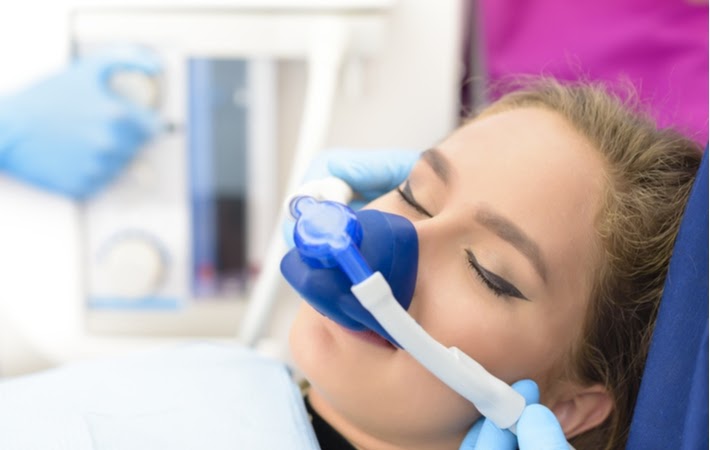Do you feel scared about going to the dentist in Murray Hill?
You are not alone if your answer is yes. In the US, more than half of adults are afraid to go to the dentist Murray Hill, and 17% will not go at all. That indicates one out of every six people who fail to receive necessary dental care when they need it and neglect routine checkups.
Dentists may now help their anxious patients with a variety of approaches, from sedation to basic distractions.
Why do dentists use nitrous oxide?
Nitrous oxide, often referred to as “laughing gas,” is a mild gaseous sedative that efficiently reduces anxiety and discomfort when receiving dental care.
The gas, which combines nitrous oxide and oxygen, is given to patients through nose breathing masks, causing its calming effects to start working within minutes.
How do the dentist’s gas and air work?
Inhaling the gas reduces your anxiety levels and sense of pain by interacting with brain receptors and neurotransmitters.
Furthermore, it causes dopamine, a neurotransmitter that controls feelings of pleasure and euphoria, to be released, which makes the procedure far more comfortable.
What are the advantages?
Nitrous oxide is used for nervous people for a variety of reasons, such as:
-
It is safe to use.
Using a breathing mask to deliver nitrous oxide gas is quick and simple. There are no needles used, unlike other sedative methods like intravenous sedation, which is fantastic if you also have a needle fear.

-
Minimal side effects
Because laughing gas is so harmless, most patients experience minimal side effects. However, adverse effects are possible, especially when the amount of nitrous oxide being inhaled rapidly varies or if the levels reach too high. A number of adverse outcomes have been documented:
- Headaches
- Feeling cold
- Sweating excessively
- Vomiting or feeling nauseous
- Fatigue
To help patients prevent headaches, make sure they are given oxygen for at least five minutes after the nitrous oxide is switched off.
-
It acts rapidly.
In contrast to intravenous sedation, which takes around 30 to 60 minutes to take effect, nitrous oxide gas acts practically instantly, allowing the sedative and pain-relieving benefits to reach the brain and body quickly.
-
Rapid recovery
The effects of the gas swiftly diminish after you stop breathing it in. One of the few sedatives that allows you to drive home right after treatment is nitrous oxide.
The Side Effects of Nitrous Oxide
The majority of patients do not respond negatively to laughing gas. They may, however, happen if the amount of nitrous oxide being inhaled rapidly differs or if the levels reach too high. A number of adverse effects are listed by the California Dental Association (CDA), including:
- Shivering
- Headache
- Sweating excessively
- Vomiting
- Drowsiness
To prevent headaches, patients must get oxygen for at least five minutes after the nitrous oxide is turned off. The oxygen helps the patient stay more conscious and aware while also emptying the lungs of any leftover gas. By eating little before the surgery and abstaining from a large meal for up to three hours afterward, patients can also help avoid nausea or vomiting. For information on whether it is safe to drive after the procedure, talk with your dentist.
Who Needs to Use Nitrous Oxide?
Dentists advise nitrous oxide for people who:
- Experience anxiety related to dental treatment
- Fear surgeries
- Have problems with anxiety
- are stubborn and require special medical care.
- have strong gag reflexes
- Poorly react to local anesthesia
- Need to go for extensive dental procedures
Who Is Not Supposed to Use It?
For some individuals, such as pregnant women in the first trimester, laughing gas should not be used. It should also be prevented by patients who have the following conditions:
- Chronic obstructive pulmonary disease (COPD) and other respiratory conditions
- B-12 vitamin deficiency
- Enzyme state Lack of methylenetetrahydrofolate reductase
- Some mental health issues or a past drug use history


